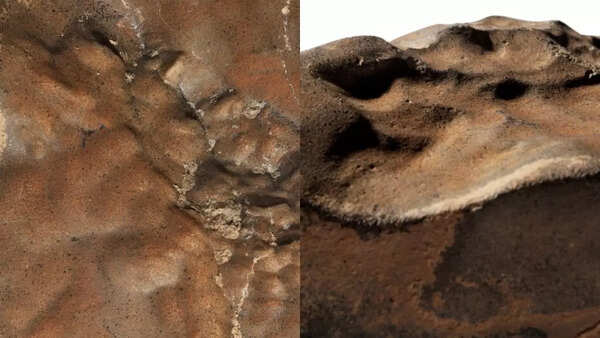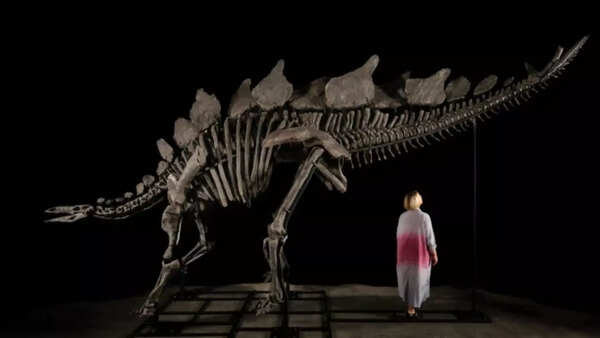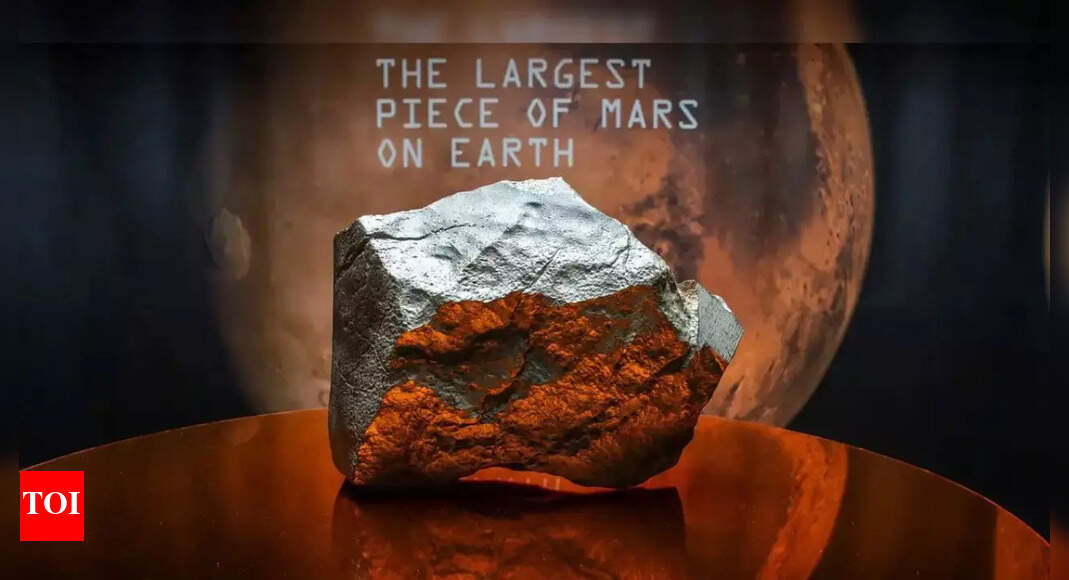A rare Martian meteorite and a juvenile dinosaur skeleton are among the star attractions at Sotheby’s highly anticipated Geek Week 2025 auction in New York. This extraordinary event features 122 exclusive items from natural history, spanning outer space to prehistoric Earth. The Martian meteorite, weighing 54 pounds (25 kg), is the largest of its kind ever discovered on Earth and is estimated to fetch up to $4 million. Meanwhile, the nearly complete Ceratosaurus skeleton—over 6 feet tall—is expected to sell for as much as $6 million. Both items represent monumental finds in planetary science and paleontology, making them irresistible to collectors, researchers, and science enthusiasts.
Largest piece of Mars rock ever found heads to auction in New York
Sotheby’s will auction the Martian meteorite known as NWA 16788, a 54-pound extraterrestrial rock that is 70% larger than any previously discovered Martian sample on Earth. Valued between $2 million and $4 million, the meteorite could become a prized possession in the world of scientific collectibles. A 54.388-pound (24.67 kg) Martian meteorite—believed to be the largest known fragment of Mars on Earth iis on display at Sotheby’s in New York ahead of its auction on July 16, 2025, as part of the Geek Week event. The rare specimen is estimated to fetch between $2 million and $4 million.

Source: Sotheyby’s
How did the largest Martian rock arrive on Earth?
According to Sotheby’s, the meteorite originated from Mars after a powerful asteroid impact ejected it into space. The rock then traveled roughly 140 million miles (225 million kilometers) before crash-landing in the Sahara Desert. It was recovered by a meteorite hunter in Niger in November 2023. Measuring approximately 15 x 11 x 6 inches, it accounts for nearly 7% of all Martian material currently on Earth.To confirm its authenticity, scientists extracted a small portion of the rock for laboratory analysis. The results revealed that it is an olivine-microgabbroic shergottite, a type of Martian volcanic rock that cools slowly. The meteorite contains minerals such as pyroxene and olivine and exhibits surface melting patterns typical of fiery entry into Earth’s atmosphere. Its chemical fingerprint matched that of Martian meteorites first identified by NASA’s Viking missions in 1976.
Dinosaur skeleton from the Jurassic period also in auction
Another highlight of Geek Week 2025 is the auction of a juvenile Ceratosaurus skeleton, standing over 6 feet tall and stretching nearly 11 feet in length. Discovered in 1996 near Laramie, Wyoming, at Bone Cabin Quarry, the specimen was mounted using 140 fossilized bones and sculpted reconstructions. Its estimated value ranges from $4 million to $6 million. The Ceratosaurus was a bipedal predator from the Jurassic era, similar in appearance to the Tyrannosaurus rex but notably smaller. Its distinct features include short arms, sharp teeth, and a prominent nasal horn.

Source: Sotheyby’s
Both the meteorite and dinosaur fossil are part of a broader 122-lot auction that includes rare meteorites, fossils, and gem-quality minerals. The Martian rock was previously on display at the Italian Space Agency in Rome, while the dinosaur skeleton was prepared by Fossilogic, a Utah-based fossil restoration firm. Geek Week 2025 offers a unique opportunity for collectors, institutions, and enthusiasts to own a piece of planetary and prehistoric history.
Largest Martian rock in auction in New York FAQs
What is the Martian meteorite being auctioned called?It is known as NWA 16788, the largest known Martian meteorite on Earth.How much does the meteorite weigh?The meteorite weighs 54.388 pounds (24.67 kilograms).What is the estimated auction price?It is expected to sell for $2 million to $4 million.Where and when is the auction taking place?The auction will be held at Sotheby’s in New York on July 16, 2025, during Geek Week.How was its Martian origin confirmed?Scientists analyzed its chemical composition, which matches rocks identified during NASA’s Viking mission on Mars.Also Read | Shubhanshu Shukla to return Earth after historic ISS mission; know what he achieved through space experiments
